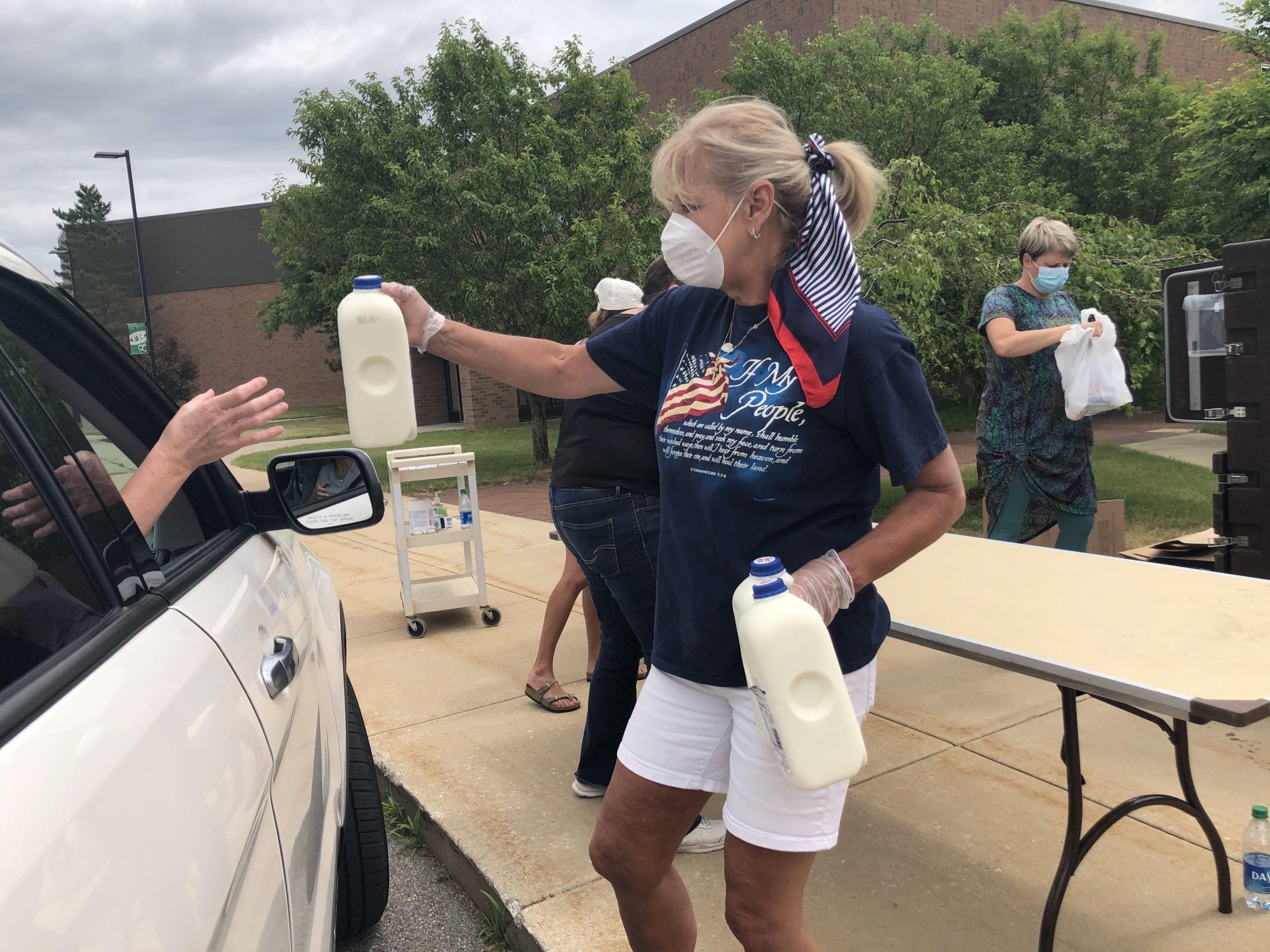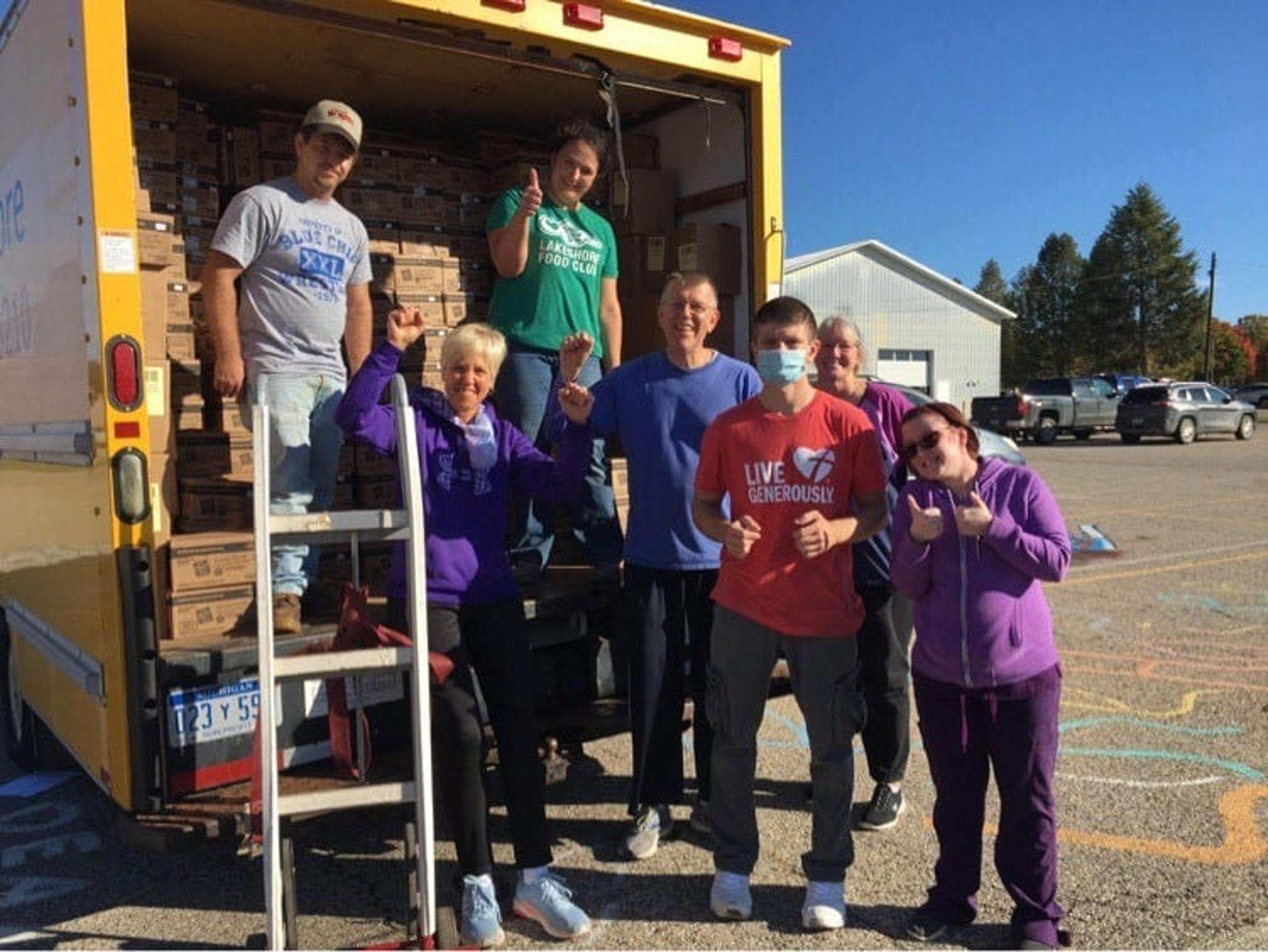‘True Heroes’: School Food Service Workers Lauded for Efforts During Pandemic
Julie Bitely
| 4 min read

As the food service director for Shelby Public Schools, Mary Rose Vanas knew the high stakes some of her students faced when schools in Michigan abruptly shifted to virtual learning last March. “As a child who was hungry, my memories are of being reliant on school to get food,” Vanas said, recalling her childhood in Northern Ireland. Vanas knows there are children in the Shelby district growing up as she did in poverty and counting on school meals to avoid hunger. Prior to the pandemic, she spearheaded efforts to take advantage of the Community Eligibility Provision, which allows high-poverty districts to serve free breakfast and lunch to all students.

Making sure those necessary meals weren’t interrupted due to the pandemic was personal for Vanas and her team. The radical changes they made to shift from serving in-person meals to operating multiple food distribution pick-up sites were daunting, but vital. Vanas said everyone pulled together to make it happen. “My guys are superheroes,” she said of her staff. “They’re really flexible and they saw the need because it’s their community. They live here, it’s their people.”
‘True heroes’
Like Vanas and her staff, school food service teams throughout Michigan quickly shifted the way they operated to ensure children were still being fed while learning at home. This school year has continued to test their abilities to flex as some districts returned to in-person learning, adopted hybrid models, or continued to be fully remote. “These food service workers have worked so hard,” said Diane Golzynski, director of the Office of Health and Nutrition Services for the Michigan Department of Education. “They’re working 14- to 16-hour days trying to make this happen and they are true heroes.” Golzynski and her staff work to ensure all 832 school districts in the state are adhering to federal USDA guidelines pertaining to school meals, which have changed multiple times throughout the pandemic. The food service directors she works with have joked that they never want to hear the word “pivot” again. “They’ve pivoted so many times, they’re dizzy,” Golzynski said. Despite the operational changes they’ve had to make, school districts in Michigan were able to serve almost 148 million meals from March 2020 through November 2020, the latest numbers Golzynski has. That’s down about 20% from the same time period in 2019, although remarkable considering some states have seen drops closer to 50%. Golzynski attributes the decrease in meals served to some families not taking advantage of food pickup programs. “Twenty percent hurts my heart to think kids aren’t getting meals that might need it,” she said.
School meals provided continuity, comfort for students and families
Adopting the mantra of “flexibility and grace” has helped Sarah Hawkins keep perspective this school year. As food service director at Forest Hills Public Schools, Hawkins has been inspired by her staff and their ability to come together. From March 16, 2020 through the end of the 2019-2020 school year, the district served 208,000 boxed meals through curbside pickup sites. Food distribution continued throughout the summer and boxed meals continue to be distributed for families choosing to participate in virtual learning, which means Hawkins’ team is serving in-person meals and boxing them up for families who still need them at home - total meal counts for the current school year through the end of February number 400,597. “I’m really proud of my team and honestly the district as a whole,” Hawkins said. “So many departments came together to make it a possibility in such a short amount of time. It was very inspiring how many of the ladies and gentlemen on the food service team just wanted to be there to give back to the community.”
Community volunteers played important role in feeding kids
Both Hawkins and Vanas said the work of community volunteers lightened their load, underscoring the value of the work and service they were providing to students and families. “It was amazing. The response within the community and the overwhelming offers to help pack and serve the meals – we had more volunteers than we could schedule,” Hawkins said. Vanas took on additional work to become a distribution site for the USDA’s Farmers to Families Food Box program, which provides food relief to anyone in need. She said dedicated volunteers in her community sign up for 5 a.m. shifts every Tuesday to help and those same people are working Thursday and Friday shifts for families picking up food through the school lunch program. “We need the buy-in from the community and the community has really bought into bonding together to make this happen,” she said. Waivers to expand the USDA’s free lunch program to all students, regardless of need, will continue through the 2020-2021 school year. Find a pickup location near you by visiting the MDE’s Meet Up and Eat Up service locator. This blog is part of a regular series highlighting essential workers who stepped up during the COVID-19 pandemic. [gallery ids="33600,33601,33602,33603,33647,33646"] Related:





